Diversity and inclusion
We’re about tackling injustice. To do this, it's crucial we reflect the communities we serve. Our decisions will be better because of it - whether it's with our programmes or employees.
- We’re fighting to make our education system more inclusive and diverse.
- We’re transparent, regularly sharing our internal statistics.
- We’re focused on improving our own diversity and inclusion.
- We know we can do better.
We’re building a fair education for all. And a fair place to work.
Why it's important
The injustices have gone on too long
Not all young people get the same start in life.
Our society, economy and education system unfairly keeps generations of pupils at a disadvantage because of classism, racism and sexism. Doors are closed to them before they even know they exist, blocking our country’s talent pipeline.
It’s an outrage. Family income, skin colour, sex or gender shouldn’t affect where you end up. But they do. And our unfair education system keeps things the same.
The future workforce
Imagine if the next generation was on an even playing field.
Imagine if they all had the opportunity to enter the workforce with the same education, work experience and confidence they need to thrive.
Reversing years of inequality is not easy and it will take time. But how we educate, support and of the next generation will change the game.
By building a fair education for all, we are building a future workforce that truly reflects our diverse society.
You can’t be what you can’t see
For lots of young people, it’s the people in their lives that have the biggest influence. Teachers often become role models for their pupils. Their experiences and perspectives are important in showing young people what they’re capable of.
By making sure our pupils have diverse role models, not only will this benefit children from underrepresented groups, but all children.
Celebrating diversity at Copthall School
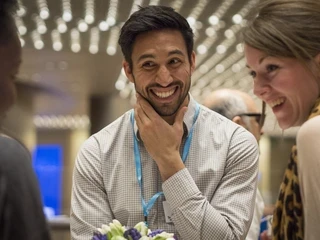
What we're doing
Standing up for what’s right
We, as one of the largest education charities in the UK, have influence. Whilst our core work is to make sure disadvantaged schools have the teachers and leaders they need to thrive, our mission is to make education fair. We’re working to help the system improve and have launched multiple campaigns to help drive lasting change at a societal level.
Recruitment and selection for our programmes
Our recruitment processes aim to give all candidates have an equal chance of getting onto our programme. We have blind recruitment to remove unconscious bias. Our assessors know as little as possible about the background of the candidates – including name, age, ethnicity and school information. We also use contextual recruitment. We’ve developed a tool which flags social and educational disadvantage based on an applicant’s responses in their application. This might be school type, parental occupation or time spent in care. This allows us to consider an applicant’s academic achievements within the context they were achieved.
We’re committed to transparently monitoring diversity and inclusion across our recruitment processes and the programmes we run. We want to ensure no one is disadvantaged because of their ethnicity, gender, sexuality, or background.
We publish our diversity and inclusion figures for our Training Programme biannually. Read our latest reports in the 'Transparency' tab on this page.
Recruiting Black STEM teachers
In partnership with Sir Lewis Hamilton's foundation, Mission 44, we worked towards recruiting and training 150 Black STEM teachers to serve disadvantaged communities in England. Concluding in 2023, this collaboration made significant strides in diversifying the teaching workforce and supporting young Black people to realise their potential.
Through mentorship, recruitment programmes, and research, we gained valuable insights into effective strategies for increasing diversity in education. The model we developed offers a framework for schools across the country to recruit more Black STEM teachers, contributing to a more inclusive future for education.
Training and supporting our teachers and schools
Our training has been developed to make sure all our programme members are prepared and educated on how to be inclusive teachers and leaders. We make sure they:
- teach in an inclusive way – we train our teachers to understand the barriers to learning, how to teach in an accessible way, how to talk about race and racism confidently and adapting to make the classroom a collaborative environment that’s open to all perspectives
challenge discriminatory behaviours and language – to recognise the impact that discrimination, bullying and harassment has on everyone, not just minorities. And do something about it in their classroom and school
Report and Support
We've introduced a new website where anyone undertaking our programmes by direct delivery can easily report an EDI incident. Read our Knowledge Base page to find out more about the process, including how to submit a report and the difference between an anonymous and a named report.are able to deliver an inclusive curriculum – this means including subject-specific content from diverse groups (such as Black authors, LGBTQ+ artists, disabled historical figures), celebrating diversity, providing positive representation and balanced portrayal of diverse groups as not always the ‘oppressed’ and understanding the culture and histories of pupils
have the support to help develop inclusive environments – working with their schools on how we can best support inclusive learning and working
Being an inclusive employer
To make sure our work on programmes and networks is inclusive, we must create a workplace where inclusion is at the heart of what we do. As an employer our aim is to create a place where everyone can perform, learn and contribute while having the confidence to be themselves. To do this we must remove the systemic biases and barriers that have become all too familiar within the workplace.
We are a Disability Confident Employer (Level 2). We’re also proud to be recognised as an Endometriosis Friendly Employer , committed to creating a flexible and supportive workplace for people with chronic health conditions.
We’ve made significant changes to our employee recruitment and selection processes. Building on rules to ensure diverse shortlists, we’re making sure decision-making at interview stage is distributed with no one person having full say. And insisting that everyone involved in interviewing taking part in training on inclusive hiring practices– find out more about what we’re doing.
We’ve created clear policies and guidance to embed equity, diversity, and inclusion across the charity at key moments in a person’s life, including a Trans and Non-Binary Equality Policy, Menopause, Bereavement, and Serious Illness Guidance and more. This is underpinned by training and a programme of events to celebrate our diversity and better understand the experiences of those from historically marginalised and under-represented groups.
Transparency is vital in our commitment to increase the representation of our workforce to better reflect the UK working population and the communities we serve. We publish all our employee demographic data twice a year and have targets for the representation we want to see in our workforce by 2024.
Affinity networks
We believe in the power of networks to improve outcomes for individuals and drive system change. This is why we’ve helped establish a range of affinity groups in our employee community to connect individuals from varied backgrounds. Affinity groups are made up of people connected by similar identities, backgrounds or experiences focused on creating a diverse and inclusive workplace. Their purpose is to create inclusive spaces for community members to explore their commonalities, grow professionally, and build community.
These are self-led networks that provide support to members and identify opportunities to work together to make change happen. Five current affinity groups are: LGBTQ+, BAME, Working families, Women’s network and Neurodiversity and Disability Network.

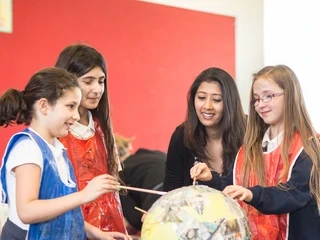
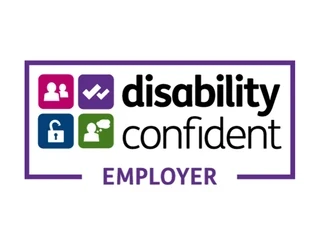
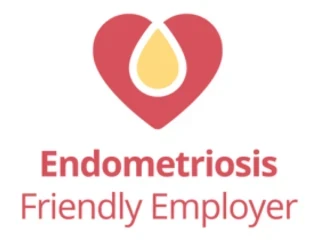
What's next
There’s so much more to do
We’ve come some way already, but we know there’s lots more to do. Over the coming months and years, we’ll be constantly assessing and developing our processes, programmes and support to make sure people from marginalised groups are treated fairly and that our education system works for every child.
As an employer we’re making progress too. We regularly work with outside organisations to benchmark ourselves and get expert input into how we can improve. This includes the Disability Confident scheme, Working Families, Stonewall, Business in the Community and Inclusive Employers.
As well as increasing the representation in our workforce, our focus is on creating an organisation where everyone wants to work: where everyone has the confidence to perform, learn and contribute. We’ll do this by taking an inclusion first approach in everything we do. We’re looking at the opportunities where we can adapt to be inclusive from the start, rather than someone needing to request it from us. For example, from this year onwards we’re making all our bank holidays outside our winter shutdown flexible. People can choose when they take their bank holiday leave – this could be a religious or cultural festival, their birthday or whenever suits. We’re also making seemingly smaller, but vital changes like making sure all interview questions are sent to candidates at least five days before their interview. We know this makes a difference to those with anxiety to help people feel better prepared. Many of these changes will benefit everyone.
Continue learning
There is still a lot we need to learn and understand how we can make our ambitions in this area a reality. We will continue to regularly evaluate the diversity and inclusion on each of our programmes to identify room for improvement. We also need to further our understanding of the problem and what works. To do this, we’re commissioning research from NFER (National Foundation for Educational Research) on racial equality in the English teaching workforce and conducting our own analysis on how schools can be more inclusive.
Read on
- Our diversity and inclusion reports
- Our missing pages library
- Blog: Diversity and inclusion on our training programme 20/21
- Blog: Underrepresentation in our senior school leaders
- Blog: How were improving diversity and inclusion (August 2020)
- Blog: Creating an inclusive recruitment process
- Video: Class of 2020, episode 4 ‘Representation’
- Video: Becoming an anti-racist school (webinar)
- Video: Tackling racism, listening to young people (webinar)

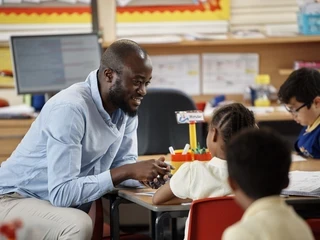
Transparency
We believe transparency is a stimulus to action, an invitation to feedback and a form of accountability. So, we’ve gone beyond statutory guidance to publish detailed demographics on our workforce twice a year and publish our ethnicity pay gap.
Transparency is a general principle at Teach First, as well as a force for justice, so we hope to become ever more transparent over time.
We also publish our diversity and inclusion figures for our Training Programme biannually. Read our latest reports:
Gender pay gap reports:
Ethnicity pay gap reports:
Socio-economic Background pay gap reports:
Employee diversity statistics:
- February 2025
- August 2024
- August 2023
- February 2023
- August 2022
- February 2022
- August 2021
- February 2021
- August 2020
- August 2019
Targets for representation
We have targets for how diverse our employee population is at Teach First – our ambition is to reach these by 2024. We are also working on what our targets will be for beyond 2024, we will publish these once they are agreed.
| Baseline (July 2019) | Current (February 2023) | Target (August 2024) | ||||
| Leadership | All staff | Leadership | All staff | Leadership | All staff | |
| Women | 67% | 76% | 71% | 75% | 70% | 70% |
| BAME | 6% | 12% | 12% | 18% | 20% | 20% |
| LQBTQ+ | 5% | 6% | 11% | 8% | 8% | 8% |
| Disability | 1% | 3% | 8% | 8% | 8% | 8% |
| Free school meals* | Unknown | Unknown | 18% | 17% | 15% | 15% |
*We are currently updating how we measure socio-economic background. From 2022, based on best practice guidance, we are asking employees what the job of the main earner in their household was when they were 14. Our targets beyond 2024 will be based on this measure.

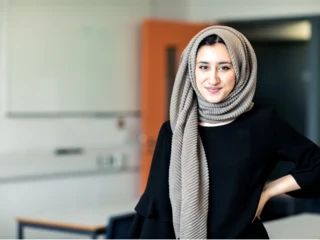
Our employee affinity groups
BAME Affinity Group
We’re working to influence and support an increase in Black, Asian and Minority Ethnic (BAME) representation across the charity, especially at senior levels. We’re also working to help make Teach First a charity that truly celebrates and encourages diversity.
LGBTQ+ Affinity Network
We exist to promote and support equality and inclusion for LGBTQ+ employees at Teach First, advocating for an internal culture and policies where people feel safe, seen and supported.
The Neurodiversity and Disability Affinity Network
We promote inclusive culture across the organisation so that people who are neurodivergent, or who have disabilities or chronic conditions are given the right support to be their whole selves at work and thrive.
Socio-economic Class Network
The Socio-economic Class Network is a staff-led network which exists to raise awareness of the impact that socio-economic class has on employee and stakeholder experiences.
Working Parents Affinity Group
We aim to connect parents, discuss issues and make recommendations to influence positive changes for parents across the organisation.
Women's Network
We aim to promote an environment in which women feel able to bring their identities to work.